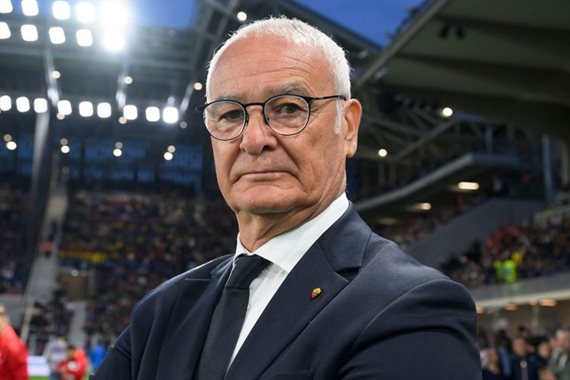ARTICLE AD BOX
Ceasefire negotiations between Russia and Ukraine may soon be under way, but Ukraine’s economic recovery will be hobbled unless the European Union fast-tracks the war-torn country’s membership and provides hundreds of billions of euros’ worth of insurance and investment, experts tell Al Jazeera.
“I think what Ukraine needs is some kind of future where it will have a stable and defendable border, and that will only come, I would think, with EU membership,” historian Phillips O’Brien told Al Jazeera.
The US administration of President Donald Trump last month handed Ukraine and Russia a ceasefire proposal that excluded future NATO membership of Ukraine, satisfying a key Kremlin demand and leaving Ukraine without the security guarantees it seeks.
“What business is actually going to take the risk of getting involved there economically?” asked O’Brien. “With NATO off the table, I think if Ukraine is going to have a chance of rebuilding and being integrated into Europe, it will have to be through a fast-tracked EU membership.”
That membership is by no means assured, although the European Commission started negotiations in record time last June, and Ukraine has the support of EU heavyweights like France and Germany.
 [Al Jazeera]
[Al Jazeera]If Ukraine becomes an EU member, it would still face a devastated economy requiring vast investment.
The Kyiv School of Economics (KSE) estimated that between Russia’s full-scale invasion in February 2022 and November last year, Moscow’s onslaught had destroyed $170bn of infrastructure, with the housing, transport and energy sectors most affected.
That figure did not include the damage incurred in almost a decade of war in the eastern regions of Luhansk and Donetsk since 2014 or the loss of 29 percent of Ukraine’s gross domestic product (GDP) from the invasion in 2022. The estimate also did not put a value on the loss of almost a fifth of Ukraine’s territory, which Russia now occupies.
That territory contains almost half of Ukraine’s unexploited mineral wealth, worth an estimated $12.4 trillion, according to SecDev, a Canadian geopolitical risk firm.
It also does not include some types of reconstruction costs, such as chemical decontamination and mine-clearing.
The World Bank put the cost of infrastructure damages slightly higher this year, at $176bn, and predicts the cost of reconstruction and recovery at about $525bn over 10 years.
‘The Kremlin has certainly looted occupied territory’
Economic war has been part of Russia’s strategy since the invasion of Donetsk and Luhansk in 2014, argued Maximilian Hess, a risk analyst and Eurasia expert at the International Institute of Strategic Studies.
“The Kremlin has certainly looted occupied territory, including for coking coal, agricultural products, and iron,” Hess told Al Jazeera.
The KSE has estimated Russia stole half a million tonnes of grain, included in the $1.9bn damages bill to the agricultural sector.
Using long-range rocketry, Russia also targeted industrial hubs not under its control.
Ukraine inherited a series of factories from the Soviet Union, including the Kharkiv Tractor Plant, the Zaporizhia Automobile Plant, the Pivdenmash rocket manufacturer in Dnipro and massive steel plants.
“All were targeted by Russian forces,” wrote Hess in his recent book, Economic War. “Russia’s attacks were, of course, primarily aimed at devastating the Ukrainian economy and weakening its ability and will to fight, but they also raised the cost to the West of supporting Ukraine in the conflict, something the Kremlin hoped would lead to reduced support for Kyiv.”
Through occupation and targeting, Russia managed to deprive Ukraine of a flourishing metallurgy sector.
According to the United States Geological Survey, metallurgical production decreased by 66.5 percent as a result of the war.
That is a vast loss, considering that Ukraine once produced almost a third of the iron ore in Europe, Russia and Central Eurasia, half of the region’s manganese ore and a third of its titanium. It remains the only producer of uranium in Europe, an important resource in the continent’s quest for greater energy autonomy.
Ukraine’s claims to have built a $20bn defence industrial base with allied help, a rare wartime economic success story.
That can make up for the losses in metallurgy, Hess said, “but only in part and in different regions of the country from which those mining and metallurgical ones were concentrated. Boosting [metallurgical activities] in places like Kryvyi Rih, Dnipro, Zaporizhzhia, and ideally territory ultimately freed from Russian occupation, will be necessary to win the peace.”
Trump’s minerals deal, and other instruments
Weeks ago, Ukraine and the US signed a memorandum of intent to jointly exploit Ukraine’s mineral wealth.
Ukraine committed to putting half the proceeds from its metallurgical activities into a Reconstruction Fund, but experts doubted the notion that mineral wealth can rebuild Ukraine.
“Projects have a long launch period … from five to 10 years,” Maxim Fedoseienko, head of strategic projects at the KSE Institute, told Al Jazeera. “You need to make documentation, environmental impacts assessment, and after that, you can also need three years to build this mine.”
The US and EU might invest in such mines, Fedoseienko said, because “we have more than 24 kinds of materials from the EU list of critical [raw] materials,” but they would only contribute to the Ukrainian economy if investments were equitable.
Trump presented the minerals deal as payback for billions in military aid.
“There’s nothing remotely fair about it. The aid was not given to be paid back,” said O’Brien.
As Fedoseienko put it, “It is not fair if everyone will say, ‘OK, we will help you in a time of war, so you are owned [by] us.’”
 Residents are seen next to houses heavily damaged by a Russian drone strike outside of Kyiv [File: Valentyn Ogirenko/Reuters]
Residents are seen next to houses heavily damaged by a Russian drone strike outside of Kyiv [File: Valentyn Ogirenko/Reuters]In addition to fairness, Ukraine needs money. Some of that needs to come in the form of insurance.
A state-backed war-risk insurance formula Kyiv reached with the United Kingdom in 2023, for example, brought bulk carriers back to Ukraine’s ports and defeated Russian efforts to blockade Ukrainian grain exports.
As a result, Ukraine exported 57.5 million tonnes of agricultural goods in 2023-2024, and was on track to export 77 million tonnes in the 2024-2025 marketing year, which ends in June, its agriculture ministry said.
“There needs to be a substantial expansion of public insurance products in particular, as well as a move to seize frozen Russian assets,” said Hess.
Seizing some $300bn in Russian central bank money held in the EU was deemed controversial, but the measure is now receiving support.
“The Russian state has committed these war crimes, has broken international law, has done this damage to Ukraine – that actually becomes a just way of helping Ukraine rebuild,” said O’Brien. “[Europeans] have a very strong case for this, but they, right now, lack the political will to do it.”
Ukraine’s president, Volodymyr Zelenskyy, has already repeatedly asked Europe to use the money for Ukraine’s defence and reconstruction.
What Europeans have done in the meantime is going some way towards rebuilding Ukraine.
Some $300m in interest payments proceeding from Russian assets are diverted to reconstruction each year.
A European Commission programme provides 9.3 billion euros ($10.5bn) of financial support designed to leverage investment from the private sector.
Financial institutions such as the European Bank for Reconstruction and Development and the European Investment Bank are providing loan guarantees to Ukrainian banks, which gives them liquidity.
“So Ukrainian banks can provide loans to Ukrainian companies to invest and operate in Ukraine. This is a big ecosystem to finance investment and operational needs to the Ukrainian economy,” said Fedoseienko.
Together with the finance ministry, the KSE operates an online portal providing information about the various instruments available, which has already helped bring 165 investments to fruition worth $27bn.
“Is it enough to recover the Ukrainian economy?” Fedoseienko asked. “No, but this is a significant programme to support Ukraine now.”

 1 month ago
22
1 month ago
22








 English (US) ·
English (US) ·